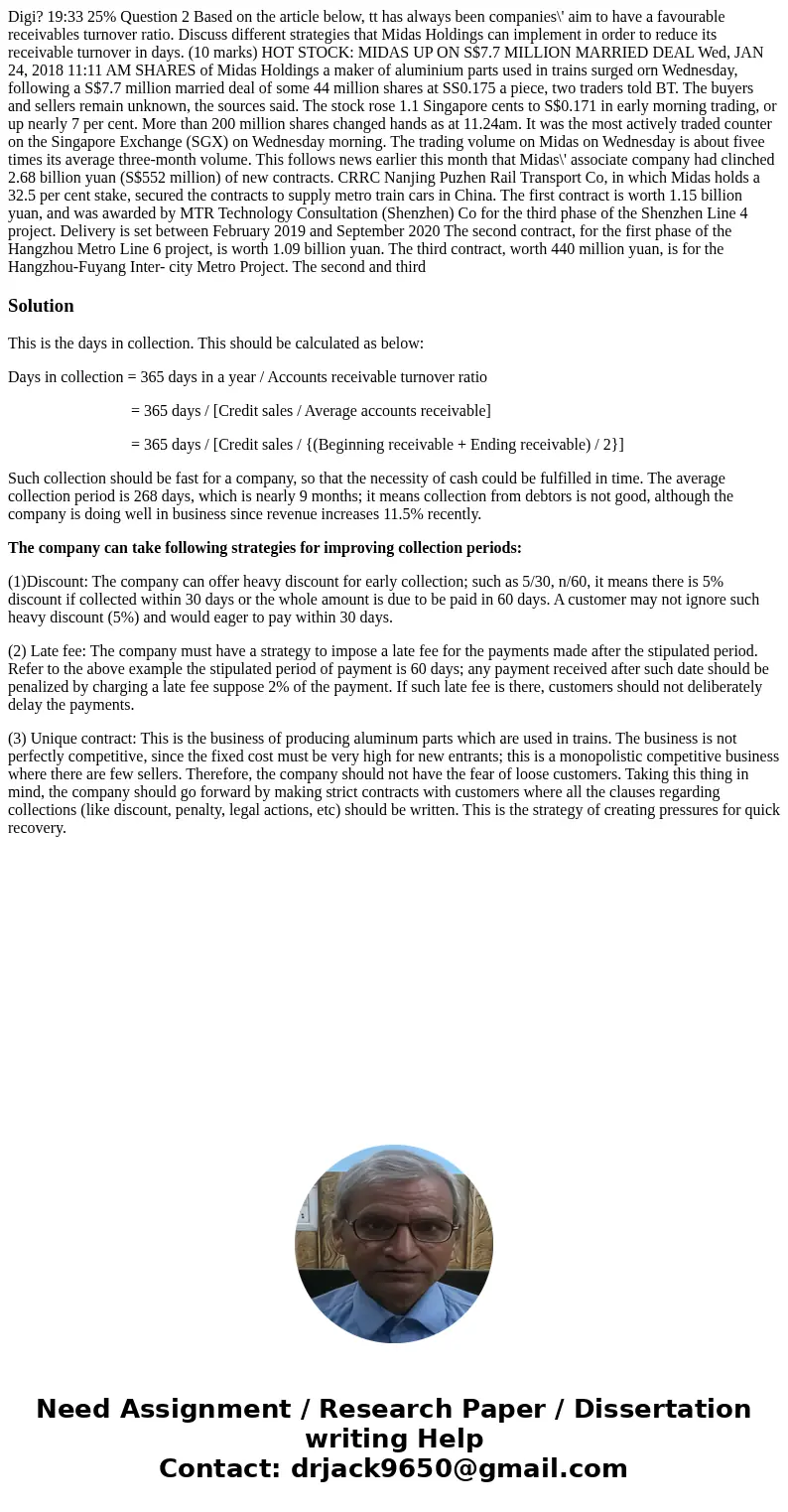Digi 1933 25 Question 2 Based on the article below tt has al
Solution
This is the days in collection. This should be calculated as below:
Days in collection = 365 days in a year / Accounts receivable turnover ratio
= 365 days / [Credit sales / Average accounts receivable]
= 365 days / [Credit sales / {(Beginning receivable + Ending receivable) / 2}]
Such collection should be fast for a company, so that the necessity of cash could be fulfilled in time. The average collection period is 268 days, which is nearly 9 months; it means collection from debtors is not good, although the company is doing well in business since revenue increases 11.5% recently.
The company can take following strategies for improving collection periods:
(1)Discount: The company can offer heavy discount for early collection; such as 5/30, n/60, it means there is 5% discount if collected within 30 days or the whole amount is due to be paid in 60 days. A customer may not ignore such heavy discount (5%) and would eager to pay within 30 days.
(2) Late fee: The company must have a strategy to impose a late fee for the payments made after the stipulated period. Refer to the above example the stipulated period of payment is 60 days; any payment received after such date should be penalized by charging a late fee suppose 2% of the payment. If such late fee is there, customers should not deliberately delay the payments.
(3) Unique contract: This is the business of producing aluminum parts which are used in trains. The business is not perfectly competitive, since the fixed cost must be very high for new entrants; this is a monopolistic competitive business where there are few sellers. Therefore, the company should not have the fear of loose customers. Taking this thing in mind, the company should go forward by making strict contracts with customers where all the clauses regarding collections (like discount, penalty, legal actions, etc) should be written. This is the strategy of creating pressures for quick recovery.

 Homework Sourse
Homework Sourse